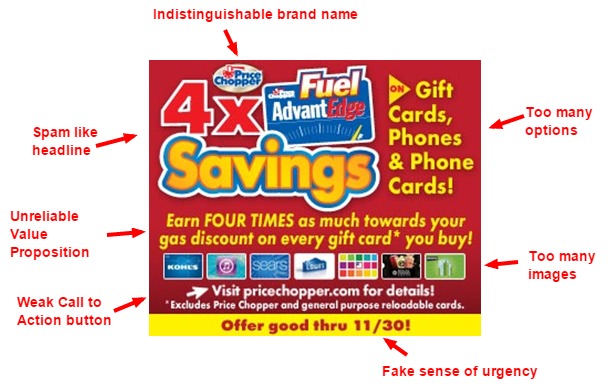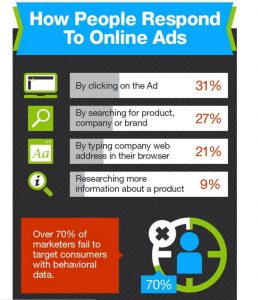When surfing the internet, you can practically guarantee that at some point you will encounter some form of advertising, whether this be as targeted, individual specific, or open, more generalised advertisements. Within the proliferation of online ads, it is important that your business stands out among the rest in order for it to be successful. Success can be measured in various ways (e.g. click through rate) and achieved using numerous methods. There are many resources available online that give useful tips on good advertisement design to increase click-through rate.
Types of advertisement
How you approach the design of advertisements will depend on the type and purpose of the advertisement. For example, the design elements of a video ad will be different to those of a banner ad. For the purpose of this blog, the focus will be banner ads, looking in particular at the major parts/components of ad design that are purported to incentivise people to interact and increase click-through rates (CTR), and examining the risks of online advertising.
Lohtia et al (2003) examine and explore how elements included in banner ads utilise incentives and emotional appeals that affect click-through rates through the use of interactivity, colour, and animation. Bayles (2002) claims the latter does not enhance users’ memory, recognition or awareness of an ad and suggests that it is hard to create guidelines for the design of such ads. Notwithstanding, regardless of whether the ad is static or animated, there are many generic guidelines on design that expand upon Lothia et al’s findings.
So, what makes a good ad?
Of the many factors that go into the design of banner ads, there appear to be elements that are consistently suggested on various articles and blogs which may incline a user to click or interact with banner advertisements. It should be noted, however, that Deighton and Sherman (2001) suggest that even when ads do not elicit a click-through, they may still have persuasive value. Here are the top four tips:
- Keep it simple. Futterman (2014), along with most others, advise that it is important to keep a banner ad uncluttered and simple so it remains appealing. Most users will only glance at the ad for a second; thus diluting its impact with information would be wasteful of both time and effort. It is therefore important to make good use of the space afforded to you. Aesthetics are important in attracting users, and, due to the limited space of banner ads, it is difficult to get a message across succinctly. Fonts, colours and images used are all important and should be chosen carefully (read more here).

An example of bad ad desiFrom: https://conversionxl.com/banner-ads-suck-boost-ctr/
- A clear call to action is another essential element in incentivising users to engage with the ad. It should be instantly apparent what will happen should the user click on the ad. An ad should explain clearly where the link will take them and the benefits of clicking the link so they understand what to expect.
- A landing page that is similar in design to the advertisement. Linking to the call to action, it is important that upon clicking the link, the user lands on a page that looks similar to the ad to avoid confusion. This maintains brand consistency. In addition, the user should arrive at the page the advertisement states it should link to. For example, where an ad includes a link for a pair of shoes, when clicking that link, it should result in the user arriving at that item.
- Staying relevant to the user. This is with reference to the customisation and placement of ads. If your ad for party hats appears on a funeral directory website, it is unlikely that a user will click on it as it would have no relevance to them. 58% percent of respondents to AdKeeper suggested that when ads aren’t relevant the likelihood of engagement was reduced. Thus, it is important to keep ads relevant to the user; this can be achieved through tracking cookies and behaviour based marketing.
Risks

From: http://www.business2community.com/infographics/effective-online-advertising-0996804#3Cfg4PozHdLVgLAm.97
Takeaway
Overall, the design of an ad is crucial in convincing a user to click through. Keeping it simple, relevant, useful and focused (in addition to being aware of the various risks around online advertising), should enhance the chances of a successful ad campaign.
Lohtia, R., Donthu, N. and Hershberger, E.K. (2003) ‘The impact of content and design elements on banner advertising click-through rates’, Journal of Advertising Research, 43(4), pp. 410–418. doi: 10.2501/jar-43-4-410-418. (abstract only)
Rudolph, S. (2016) Ad blocking on the rise: Statistics and trends [Infographic]. Available at: http://www.business2community.com/infographics/ad-blocking-rise-statistics-trends-01435073#qhiCiyiX3c14Lmx1.97 (Accessed: 24 February 2017).
